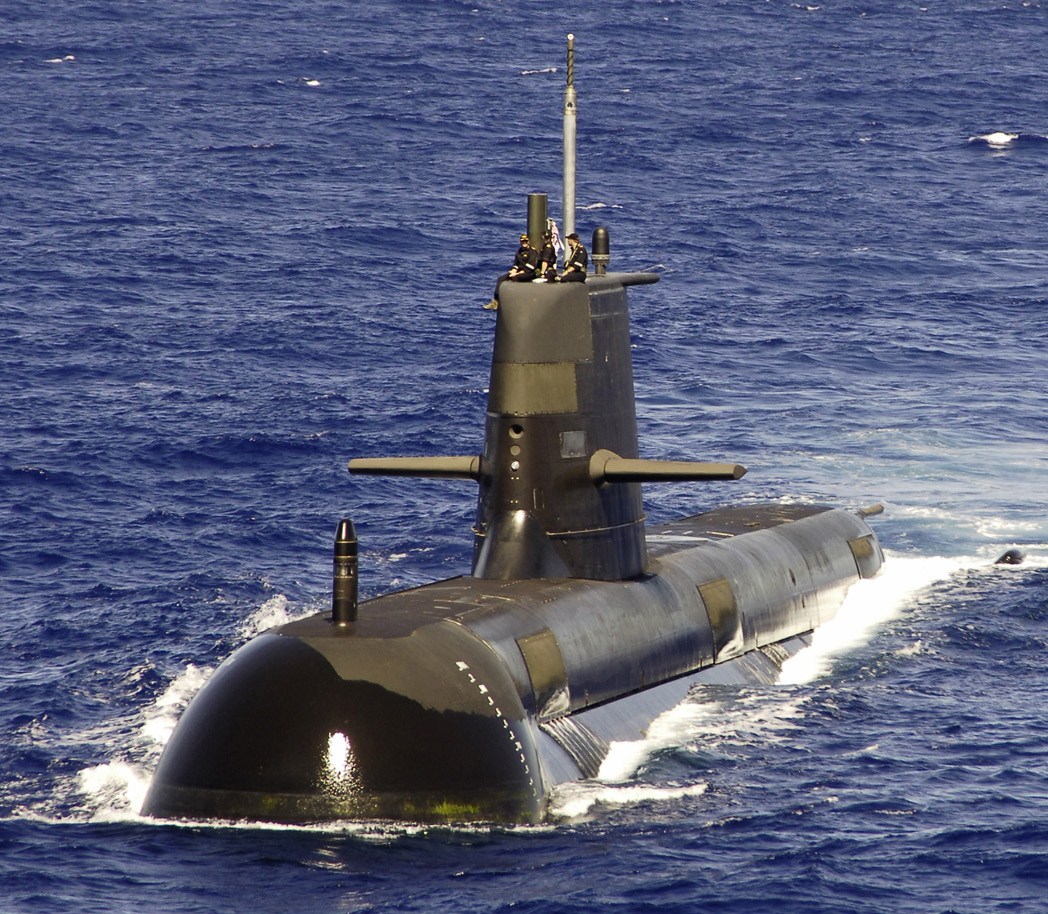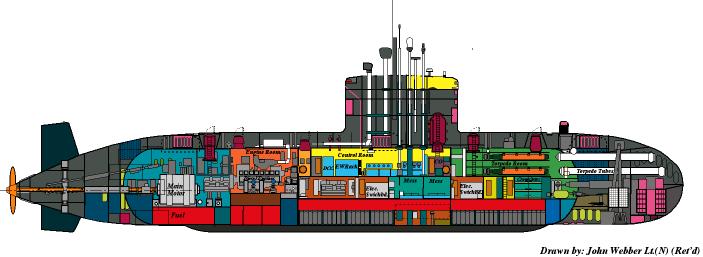|
Harushio-class Submarine
The ''Harushio'' class is a diesel-electric submarine class operated by the Japanese Maritime Self-Defense Force (JMSDF). The design is an evolution from the being slightly larger and with better noise reduction. ''Asashio'', has been modified to test air-independent propulsion (AIP), and the remaining vessels were decommissioned and replaced by the ''Oyashio''-class. ''Natsushio'', ''Hayashio'', ''Arashio'' and ''Asashio'' are all named after World War II destroyers. Vessels See also * Hai Lung-class submarine * Walrus-class submarine * Dolphin-class submarine * Type 039 submarine * Upholder/Victoria-class submarine * Collins-class submarine * Lada-class submarine * S-80-class submarine The S-80 Plus class (or ''Isaac Peral'' class) is a Spanish class of four submarines—late-1990s design, initial production order in 2003, redesign/rebuild mid-2010s, and currently in production—being built by the state-owned Spanish company ... References * ''Jane's Fighting Ship ... [...More Info...] [...Related Items...] OR: [Wikipedia] [Google] [Baidu] |
Mitsubishi Heavy Industries
is a Japanese multinational engineering, electrical equipment and electronics corporation headquartered in Tokyo, Japan. MHI is one of the core companies of the Mitsubishi Group and its automobile division is the predecessor of Mitsubishi Motors. MHI's products include aerospace and automotive components, air conditioners, elevators, forklift trucks, hydraulic equipment, printing machines, missiles, tanks, power systems, ships, aircraft, railway systems, and space launch vehicles. Through its defense-related activities, it is the world's 23rd-largest defense contractor measured by 2011 defense revenues and the largest based in Japan. History In 1857, at the request of the Tokugawa Shogunate, a group of Dutch engineers were invited, including Dutch naval engineer Hendrik Hardes, and began work on the ''Nagasaki Yotetsusho'' 長崎鎔鉄所 , a modern, Western-style foundry and shipyard near the Dutch settlement of Dejima, at Nagasaki. This was renamed ''Naga ... [...More Info...] [...Related Items...] OR: [Wikipedia] [Google] [Baidu] |
JDS Wakashio (SS-587)
JS ''Wakashio'' (SS-587) was the fifth ship of the submarine of Japan Maritime Self-Defense Force. Development and design This type is a teardrop type ship type, a so-called SSS (Single Screw Submarine) type with a single-axis propulsion system, and the structural style is a complete double-shell structure, following the method since the Uzushio-class (42SS) in the basic design concept . Meanwhile, the type, dual vibration-damping support of the anti-vibration support or main engine of the main motor, the auxiliary equipment and pipe systems, static power supply, and rectification of the hole opening on the bottom of the ship. Through these efforts, it was decided that the masker sound insulation device was unnecessary, and in the latter model of this model, it was so quiet that it would not be detected even if snorkeling was continued until the sonobuoy was visible. Construction and career ''Wakashio'' was laid down at Mitsubishi Heavy Industries Kobe Shipyard on 12 De ... [...More Info...] [...Related Items...] OR: [Wikipedia] [Google] [Baidu] |
Submarines Of Japan
A submarine (or sub) is a watercraft capable of independent operation underwater. It differs from a submersible, which has more limited underwater capability. The term is also sometimes used historically or colloquially to refer to remotely operated vehicles and robots, as well as medium-sized or smaller vessels, such as the midget submarine and the wet sub. Submarines are referred to as ''boats'' rather than ''ships'' irrespective of their size. Although experimental submarines had been built earlier, submarine design took off during the 19th century, and they were adopted by several navies. They were first widely used during World War I (1914–1918), and are now used in many navies, large and small. Military uses include attacking enemy surface ships (merchant and military) or other submarines, and for aircraft carrier protection, blockade running, nuclear deterrence, reconnaissance, conventional land attack (for example, using a cruise missile), and covert insertion of spec ... [...More Info...] [...Related Items...] OR: [Wikipedia] [Google] [Baidu] |
Submarine Classes
A submarine (or sub) is a watercraft capable of independent operation underwater. It differs from a submersible, which has more limited underwater capability. The term is also sometimes used historically or colloquially to refer to remotely operated vehicles and robots, as well as medium-sized or smaller vessels, such as the midget submarine and the wet sub. Submarines are referred to as ''boats'' rather than ''ships'' irrespective of their size. Although experimental submarines had been built earlier, submarine design took off during the 19th century, and they were adopted by several navies. They were first widely used during World War I (1914–1918), and are now used in many navies, large and small. Military uses include attacking enemy surface ships (merchant and military) or other submarines, and for aircraft carrier protection, blockade running, nuclear deterrence, reconnaissance, conventional land attack (for example, using a cruise missile), and covert insertion of ... [...More Info...] [...Related Items...] OR: [Wikipedia] [Google] [Baidu] |
S-80-class Submarine
The S-80 Plus class (or ''Isaac Peral'' class) is a Spanish class of four submarines—late-1990s design, initial production order in 2003, redesign/rebuild mid-2010s, and currently in production—being built by the state-owned Spanish company Navantia at its Cartagena shipyard for the Spanish Navy. In common with other contemporary submarines, they feature air-independent propulsion. They are oceanic submarines of medium tonnage with the capacity to carry out long duration missions in scenarios far from their base, acting with a minimum level of indiscretion. They will have an integrated platform control system that allows operation with a reduced endowment and a high degree of automation with remote control. The characteristics of this class of ships place them at a level close to those of nuclear propulsion. The lead boat in the class, the ''Isaac Peral'' ( es:Isaac Peral S-81), the first unit in the series, was launched by King Felipe VI and his daughter, Princess Leono ... [...More Info...] [...Related Items...] OR: [Wikipedia] [Google] [Baidu] |
Lada-class Submarine
Lada class, Russian designation Project 677 ''Lada'' (russian: Лада, meaning " Lada", NATO reporting name St. Petersburg) is the new advanced class of diesel-electric attack submarine designed by the Russian Rubin Design Bureau. A program to develop a "fourth generation" diesel-electric submarine, it aimed to produce a highly improved version of the Project 636 with better acoustic signature, new combat systems and possibly air-independent propulsion. However, in 2019, Alexander Buzakov, the head of the Admiralty Shipyard, indicated that there were no plans to equip the Lada class with an air-independent propulsion system. In July 2022 it was reported that work on an electrochemical generator to produce hydrogen from diesel fuel and oxygen was continuing and that the Rubin Central Design Bureau signed a new contract in 2019 to continue work. This was scheduled to be completed by the mid-2020s. History The lead boat of the class, named , was launched in October 2004 and b ... [...More Info...] [...Related Items...] OR: [Wikipedia] [Google] [Baidu] |
Collins-class Submarine
The ''Collins''-class submarines are Australian-built diesel-electric submarines operated by the Royal Australian Navy (RAN). The ''Collins'' class takes its name from Australian Vice Admiral John Augustine Collins; each of the six submarines is named after significant RAN personnel who distinguished themselves in action during . The six vessels were the first submarines built in Australia, prompting widespread improvements in Australian industry and delivering a sovereign (Australian controlled) sustainment/maintenance capability. Planning for a new design to replace the RAN's submarines began in the late 1970s and early 1980s. Proposals were received from seven companies; two were selected for a funded study to determine the winning design, which was announced in mid-1987. The submarines, enlarged versions of Swedish shipbuilder Kockums' and originally referred to as the Type 471, were constructed between 1990 and 2003 in South Australia by the Australian Submarine Corpora ... [...More Info...] [...Related Items...] OR: [Wikipedia] [Google] [Baidu] |
Upholder/Victoria-class Submarine
The ''Upholder''/''Victoria''-class submarines, also known as the Type 2400 (due to their displacement of 2,400 tonnes), are the class of the diesel-electric submarines built in the United Kingdom in the 1980s to supplement the nuclear submarines in the Submarine Service of the British Royal Navy. The boats were originally named the ''Upholder'' class, after the most renowned vessel of the former U class. Their British service life was short, with the vessels being decommissioned in 1994. After an unsuccessful bid to transfer these submarines to the Pakistan Navy in 1993–1994, the Canadian government eventually purchased the submarines and a suite of trainers from the Royal Navy for Canadian Forces Maritime Command (renamed to Royal Canadian Navy in 2011) to replace their decommissioned s in 1998. In Canadian service, the submarines are classified as the ''Victoria'' class. These submarines initially suffered from serious electrical problems and were beset by mechanical ... [...More Info...] [...Related Items...] OR: [Wikipedia] [Google] [Baidu] |
Type 039 Submarine
The Type 039 submarine (NATO reporting name: Song-class) is a class of diesel-electric submarines of the People's Liberation Army Navy. The class is the first diesel-electric submarine to be fully developed within China and also the first Chinese diesel-electric submarine to use the teardrop hull shape. Design The submarine uses a modern teardrop-shape hull for underwater performance. The hull incorporates four rudders and is propelled by a single propeller. The engine is imported from Germany. For quieter operation, the engine was mounted with shock absorbers and the hull is plated in rubber tiles for sound deadening. Development was not without problems, as a lengthy testing period for the first vessel (''320'') attests. Problems with noise levels and underwater performance led to revisions in the design and only a single boat was ever built to the original specification. Improvements led to the specification for the ''Type 039G'', which became the bulk of production, with sev ... [...More Info...] [...Related Items...] OR: [Wikipedia] [Google] [Baidu] |
Dolphin-class Submarine
The ''Dolphin'' class (Hebrew: הצוללות מסדרת דולפין) is a diesel-electric submarine developed in Israel and constructed by Howaldtswerke-Deutsche Werft AG (HDW) in Kiel, Germany, for the Israeli Navy. The first boats of the class were based on the export-only German 209-class submarines, but modified and enlarged. The ''Dolphin'' 1 sub-class is slightly larger than the German Navy Type 212 in length and displacement. The three newer air-independent propulsion (AIP) equipped boats are similar to the Type 212 vessels in underwater endurance, but are longer, nearly 500 tonnes heavier in submerged displacement and have a larger crew than either the Type 212 or the Type 214. The ''Dolphin 2'' class are the largest submarines to have been built in Germany since World War II. The ''Dolphin''-class boats are the most expensive single vehicles in the Israel Defense Forces. The ''Dolphin'' class replaced the aging , which had served in the Israeli navy since the lat ... [...More Info...] [...Related Items...] OR: [Wikipedia] [Google] [Baidu] |
Walrus-class Submarine
The ''Walrus''-class submarine is the only submarine class currently in operation in the Royal Netherlands Navy. The boats have been in service since 1990 and are all named after sea mammals. History In 1974, the Royal Netherlands Navy announced, through the Ministry of Defence's 10-year plan , that it wanted to replace its aging s.H. Vredeling, C.L.J. van Lent, A. Stemerdink, pp. 61. Since the 1960s, the Royal Netherlands Navy had been conducting studies and research into a suitable replacement attack submarine. This research initiative concluded that the Netherlands should build conventional diesel-electric submarines, as nuclear submarines were costly and could only be constructed, crewed, and maintained by countries with major navies such as the United States, France and the United Kingdom. Nonetheless, even with the diesel-electric submarine, the Dutch government sought to work together with international allies to reduce construction costs. Between 1975 and 1978, the desig ... [...More Info...] [...Related Items...] OR: [Wikipedia] [Google] [Baidu] |




